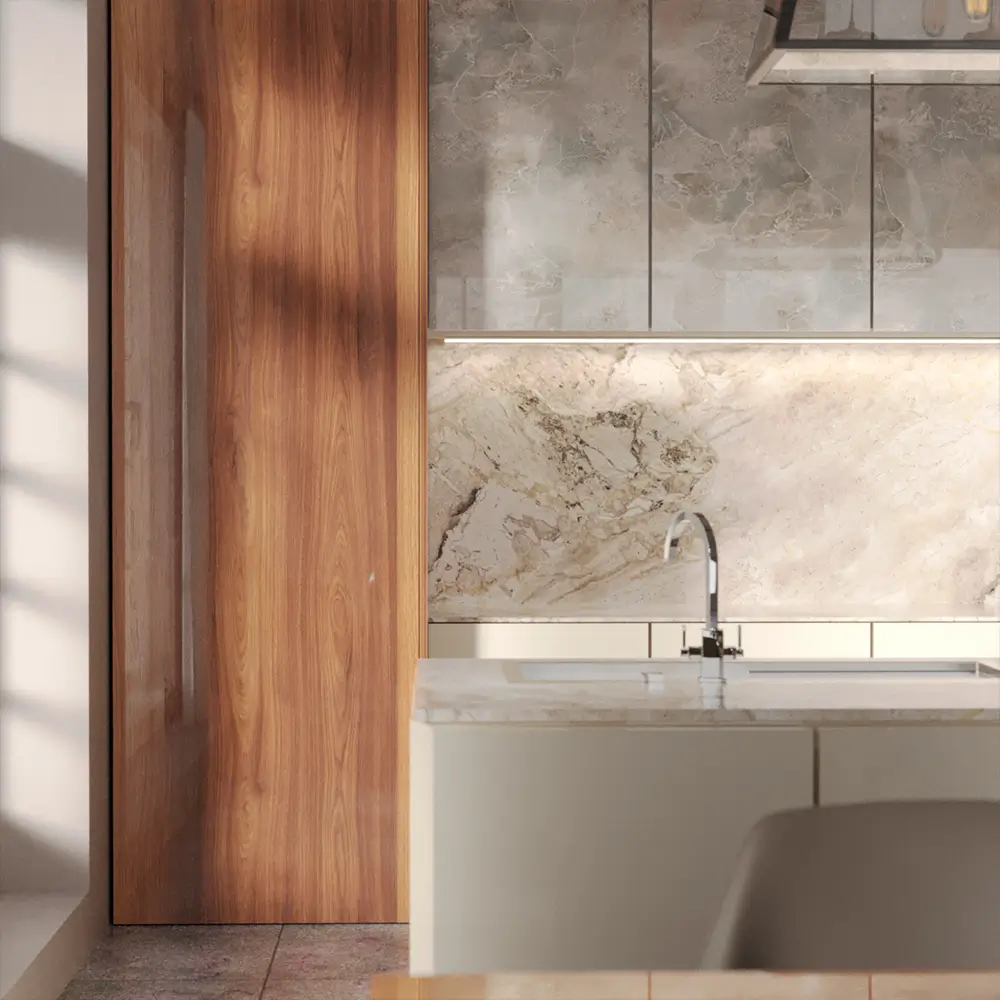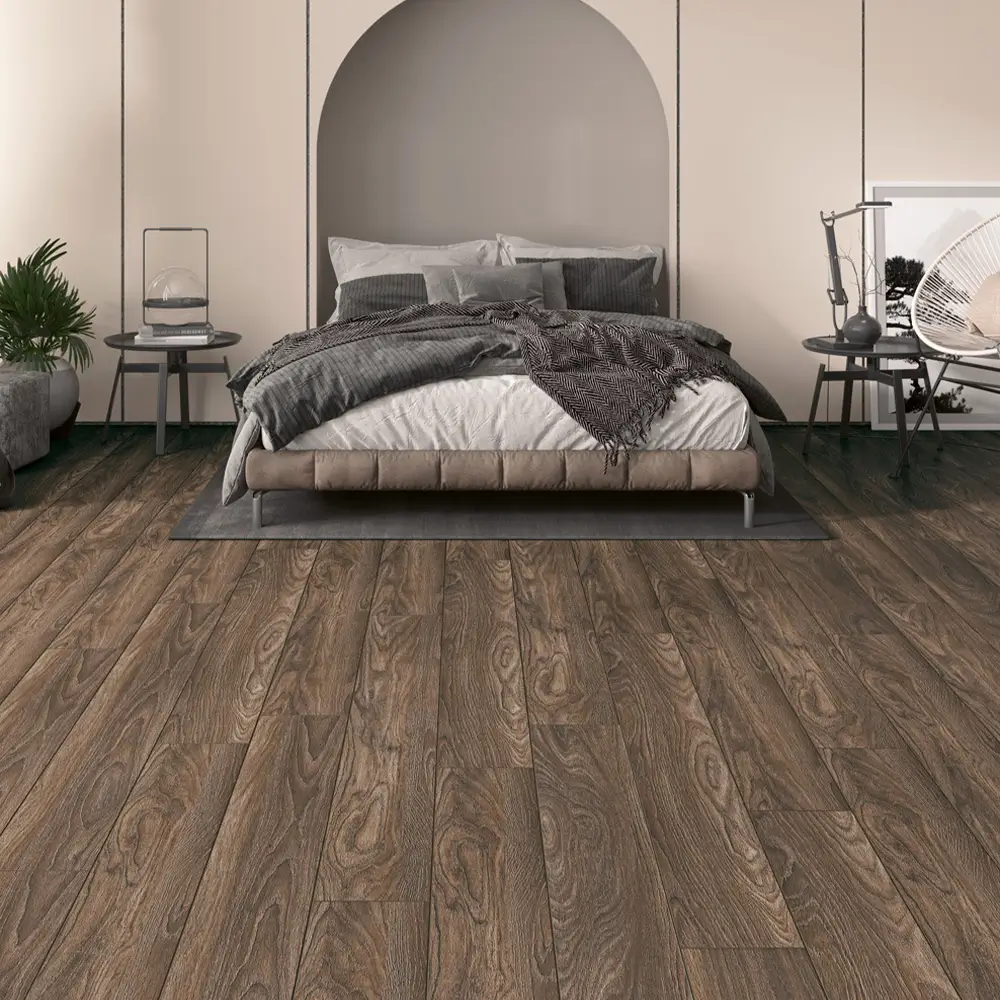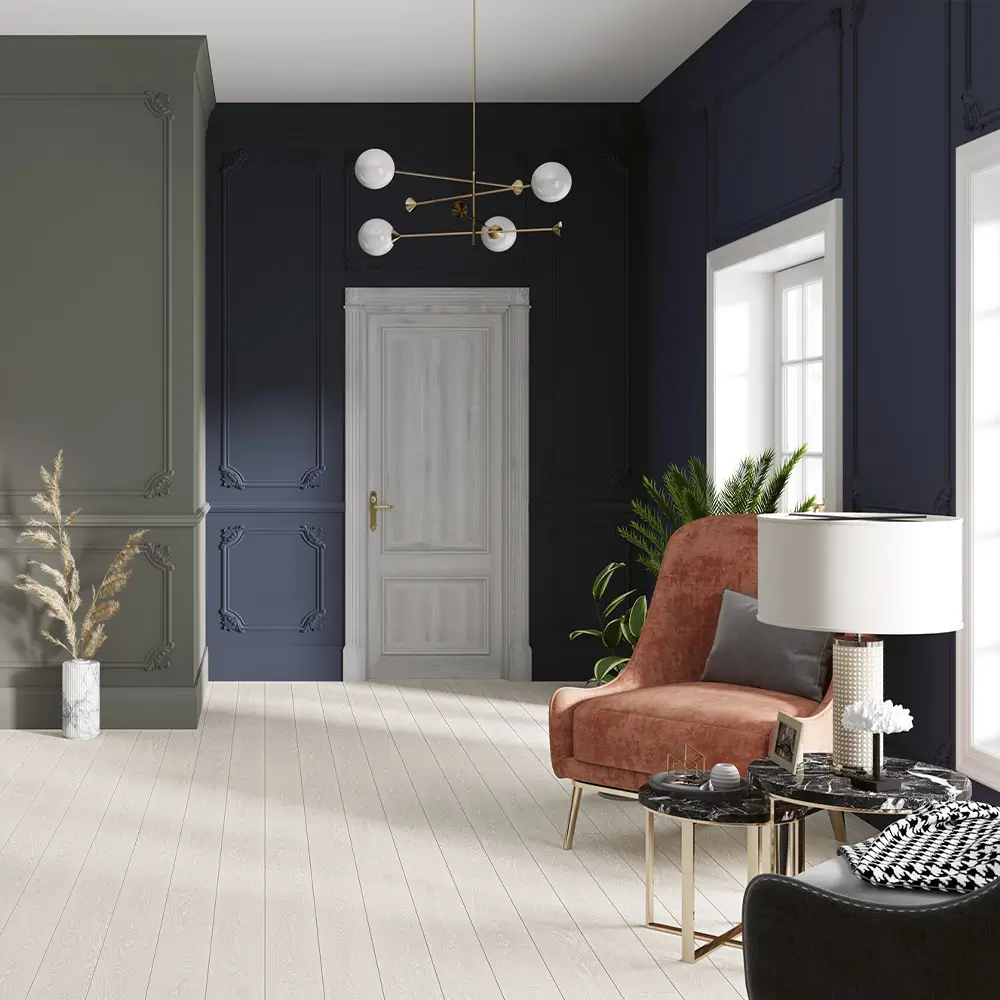
Category
inspiring ideas
inspiring ideas
What Should You Consider When Choosing Interior Doors?
Interior doors not only separate different areas in a living space, but also serve as a visual and physical link between them. They contribute to the architectural flow and the overall interior design scheme by creating hidden or open spaces. Although they are an essential architectural element that facilitates the movement within a building, they are often overlooked. Since they significantly impact the quality of life and atmosphere, selecting the right interior door models becomes crucial when planning or renovating a building’s interior. It’s important to consider factors such as the door’s style, color, texture, material, and finish, as well as whether you prefer solid doors or those with glass elements.
What Style Should Interior Doors Have?
The style of interior doors can greatly influence the overall interior design. To maintain a sense of flow between rooms, consistency in design is key, but that doesn’t mean all doors have to be identical. Mixing and matching styles can create a fun and eclectic look. When selecting door models, you should also consider the overall size and feel of the room. For instance, a large, ornate door may overwhelm a small room, making it feel even more cramped.
For homes with a modern minimalist design, clean lines, neutral color palettes, and organized spaces, doors in white, gray, or other solid colors with minimal details and smooth surfaces are a great choice. Glass-panel doors, which maintain the minimalist style, can also add elegance and a sense of lightness to the interior. Light wood tones or white finishes can further enhance the modern, minimalist look.
Classic Décor in Traditional Spaces…
For living spaces with rich colors, detailed wood craftsmanship, and classic furniture, the doors chosen should complement these decorative elements. To add a sophisticated touch, raised panels, slatted doors, or glass-panel doors may be preferred. Warmer tones or wood veneers work perfectly with classic décor. For rustic or farmhouse-style homes, which are characterized by natural textures and a cozy feel, doors that evoke warmth and comfort are ideal. Doors with wood textures or reclaimed wood appearances provide a rustic finish that complements the style. In loft-style or industrial spaces, light gray door models can be a timeless choice, adding a sense of spaciousness to the environment.
How Do Door Types Affect the Spatial Layout?
Sliding doors, pocket doors that disappear into the wall, French doors that bring in as much daylight as possible with their glass panels, bi-fold doors, and panel doors are some of the most common types of interior doors today. They are usually made from wood or MDF and designed with classic square panel patterns. Nowadays, most interior doors are made from medium-density fiberboard (MDF). Since MDF is an engineered product, it is strong and does not warp like wood. It also has no grain, making it completely smooth and easy to paint.
Transparent, frosted, textured, and colored glass interior doors are not only stylish and sophisticated but also serve a functional purpose by letting in more light, making them a great option for smaller, more compact homes. They can still maintain some degree of privacy with frosted or grooved glass while providing a sound barrier.
Pocket Doors and Flexible Designs
Pocket doors offer design flexibility for minimalist spaces. If space is tight or you wish to combine two areas, double doors could be considered. In corridors, doors that provide sound insulation are practical for noise control. You should also decide which direction the door will open. Ideally, a door should never open into a hallway or corridor. While hidden sliding doors work well between spaces like a master bathroom and dining room, for example, they are not ideal between spaces like a corridor and a bedroom or home office, as sound and smells can easily pass through.
Solid or Panel Doors?
A solid wood door always adds rustic elegance while providing excellent heat and sound insulation. However, it can be expensive and may stretch the budget. Instead, panel doors made from durable engineered wood products can achieve a similar aesthetic with various wood textures. These doors also offer similar sound and heat insulation properties. Doors are often rated with an STC (Sound Transmission Class) number, which measures how much sound passes through. The higher the STC number, the less sound is transmitted through the door. Variodor doors, with their monoblock structure, soundproof certificate up to 38 decibels, silent lock system, 100,000 times opening/closing guarantee, easy-to-clean surface structure and 41 minutes fire resistance features.offer superior comfort.
Hardwoods like cherry, mahogany, maple, beech, and pine are commonly used, but the most common solid wood door is the six-panel pine door, often used for exterior spaces but occasionally used in interior spaces as well. Keep in mind that solid wood expands and contracts with temperature and humidity changes, so it’s best not to use solid wood doors in bathrooms, saunas, or other damp environments. Metal and glass doors are often used for both interior and exterior spaces, offering a sleek, modern look with less complexity than solid wood doors. While they tend to be more expensive than most wood combination models, they are still less expensive than solid wood doors.
Things to Consider When Deciding on Door Models:
- Analyze the dimensions of the space, natural light, and ceiling height.
- Decide on which style you want to emphasize. Consider how the color, material, and hardware of the door will complement the room it opens into.
- Door frames and baseboards also serve as decorative elements. Ensure they align with the door panels for a seamless finish.
- The technology behind door hardware is advancing rapidly. Pay attention to features like concealed hinges and tracks that can manage the movement of complex sliding systems.
- Ensure the door hardware matches the overall style of the home, the door types, and the direction the door opens.
- For spaces with limited light, glass doors are a great choice to maximize daylight.


